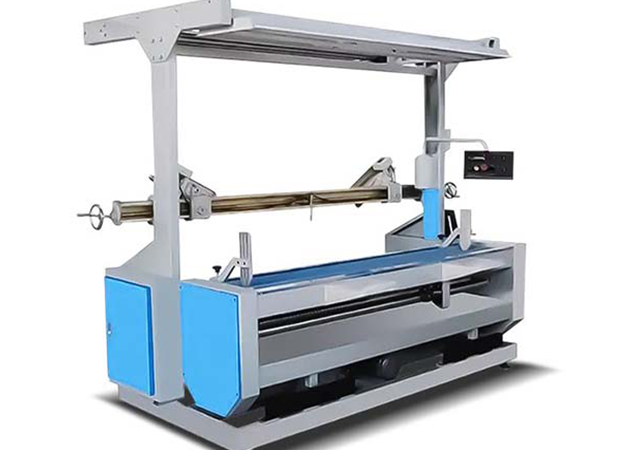A Fabric Rolling Machine serves a multifaceted purpose, encompassing fabric measurement, rolling, cutting into uniform lengths, and even folding or pleating. Its versatility extends to creating ruffles, gathering fabric, and crafting quilts, thereby simplifying various aspects of working with fabric and sewing.
Benefits of Employing a Fabric Rolling Machine:
Precision in Measurements: Achieving precise measurements is a hallmark of the Fabric Rolling Machine. Its inherent precision, coupled with the ability to input specific measurements, ensures accurate outcomes in fabric measurement.

Time-Saving: The time efficiency of the Fabric Rolling Machine is unparalleled, especially when dealing with large quantities of fabric. The machine vastly outpaces manual efforts in measuring and rolling.
Consistent Fabric Rolls: Fabric rolling machines guarantee consistently even rolls by utilizing rollers to evenly distribute fabric during the rolling process. This results in a polished and professional appearance for the finished product.
Operational Mechanism of a Fabric Rolling Machine: Fabric Rolling Machines, specialized textile apparatus, are employed predominantly in textile factories and commercial settings where substantial fabric quantities necessitate regular rolling. These machines typically feature two or more large cylinders through which fabric is fed. Guided by a series of rollers, the fabric moves smoothly through the machine, gradually rolling into neat, even coils. Once the desired fabric length is achieved, the machine halts, and the fabric roll can be easily removed.
Steps for Utilizing a Fabric Rolling Machine: If you're a novice to fabric rolling machines, fear not!
The following simple steps guide you through the process:
Gather Materials: Assemble the fabric rolling machine, a tape measure, and fabric weights.
Position and Roll: Place the fabric against the machine's stop, roll it until fully wrapped, and attach fabric weights.
Measurement: Read off the measurement from the machine's scale.
Rolling Process: To roll the fabric, place one end on the roller, activate the motor (if applicable), and guide the fabric to ensure a smooth wind-up.
Finalization: Detach the weights and coil up your fabric for future use.
Common Issues with Fabric Rolling Machines: Several issues may arise during fabric measuring and rolling, including fabric bunching or wrinkling, incorrect tube size usage, and calibration errors. Addressing these concerns is crucial for maintaining accuracy in measurements and achieving uniform fabric rolls.
Alternatives to Fabric Rolling Machines:
In the absence of a fabric rolling machine, alternatives such as tape measures with rolled-up magazines or pool noodles, as well as pre-rolled fabric measuring devices, can be employed to achieve satisfactory results in fabric handling.
In conclusion, the Fabric Rolling Machine stands as a cornerstone in streamlining fabric measuring and rolling processes, offering businesses a potent means to save time and reduce costs while ensuring precision. The advantages of this powerful fabric roller make it an indispensable asset in the production line-up of numerous factories, solidifying its status as a key player in the textile industry.




